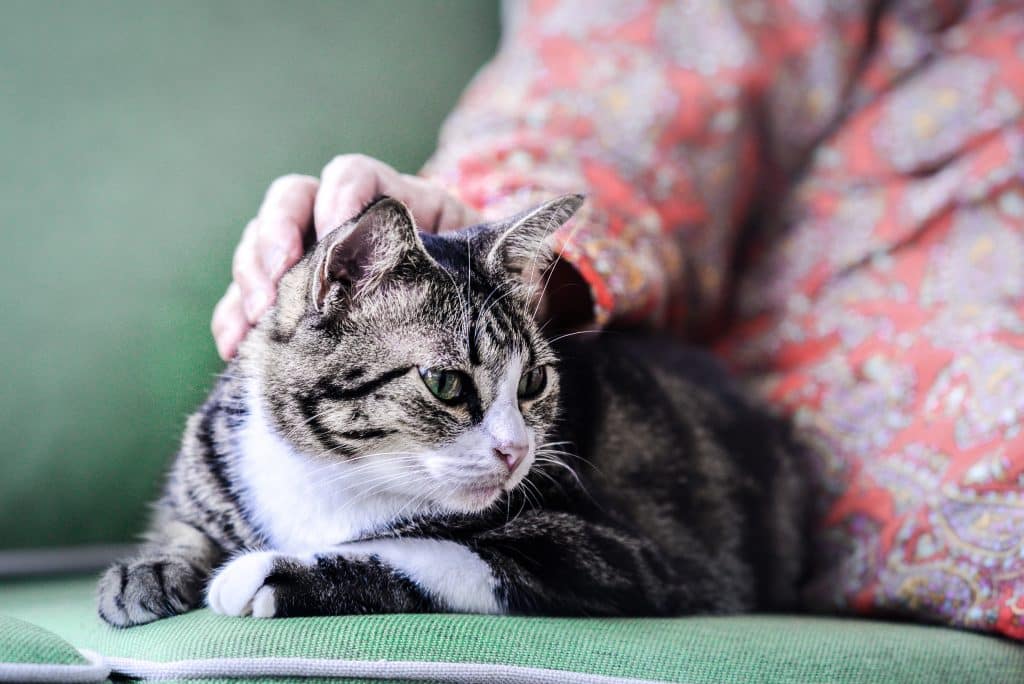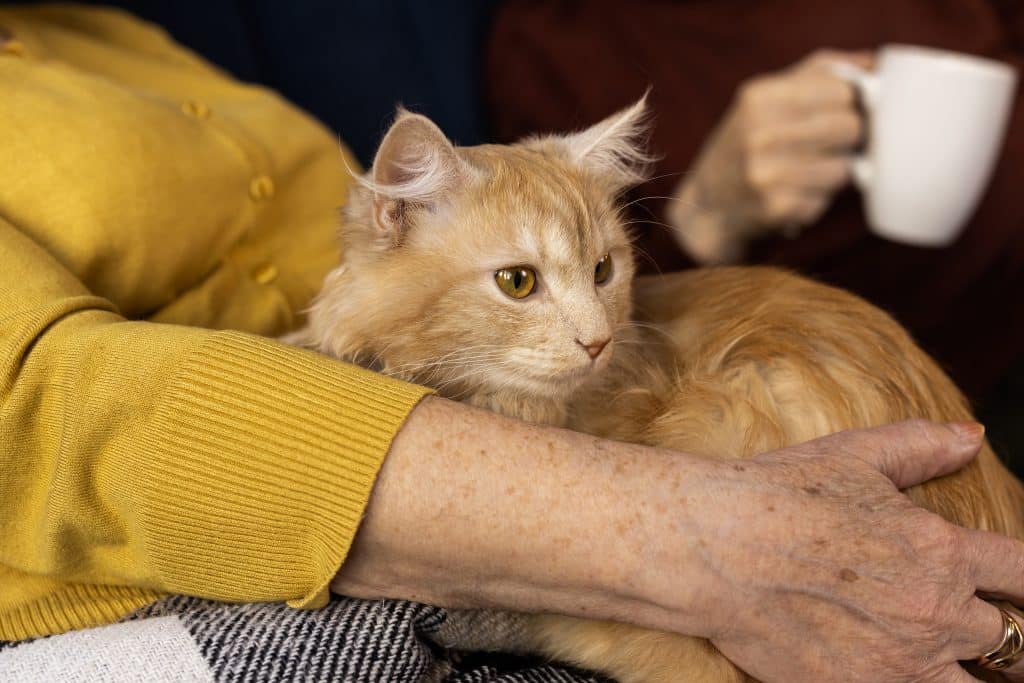Arthritis in senior cats: Spotting symptoms and managing pain effectively

Anúncios
Arthritis in senior cats often manifests as subtle behavioral changes and reduced mobility. Early symptom detection enables effective pain management and improves their quality of life.
As our beloved feline friends age, just like humans, they face health issues. Among the most common is arthritis in senior cats, a condition that can significantly impact comfort and joy.
This degenerative joint disease transforms once playful movements into sources of discomfort. Understanding arthritis in senior cats allows early intervention and proactive care.
Anúncios
Understanding feline arthritis: The silent ailment
Arthritis in cats is a chronic, progressive joint disease. Cartilage loss leads to bones rubbing together, causing pain and reduced mobility.
Cats instinctively hide pain, making arthritis in senior cats harder to detect. Subtle behavioral changes often replace obvious lameness.
The condition progresses slowly, intensifying over months or years. Timely veterinary care ensures interventions that preserve independence.
Anúncios
The underlying pathology involves cartilage breakdown, inflammation, and bone spurs. These changes worsen joint friction and mobility.
Recognizing arthritis in senior cats early means observing even minor daily changes. Every subtle sign can reveal deeper discomfort requiring veterinary care.
Spotting the subtle symptoms: Decoding feline discomfort
Spotting arthritis in senior cats requires careful observation. Unlike dogs, cats mask pain, so small behavioral shifts are key.
Owners must notice changes in jumping, grooming, or daily activities. These early signs are often mistaken as “just aging.”
Behavioral changes are the most common indicator. Reduced playfulness, difficulty with litter boxes, or irritability may appear.
Litter box avoidance or unkempt fur also signal discomfort. Both point toward arthritis in senior cats rather than misbehavior.
Veterinary exams, gait observation, and X-rays confirm diagnosis. This ensures treatment plans tailored to each cat’s needs.
Effective pain management: A multi-modal approach
Managing arthritis in senior cats requires combining medications, lifestyle changes, and therapies. No single solution works alone, so a holistic approach is best.
Pharmaceuticals like NSAIDs, gabapentin, or PSGAGs reduce pain and inflammation. Regular monitoring prevents side effects and ensures long-term safety.
Owners must never give human medications. Only veterinary prescriptions guarantee safe pain relief.
This balanced plan supports comfort and fosters normal behavior. Close collaboration with veterinarians ensures evolving needs are met.

Environmental modifications: Enhancing comfort at home
Environmental changes can transform life for arthritis in senior cats. Small adaptations reduce strain and improve accessibility.
Ramps, orthopedic beds, and non-slip rugs make movement easier. Low-sided litter boxes and raised food bowls reduce daily pain.
Warmth also alleviates stiffness. Heated beds or cozy blankets soothe joints naturally.
These thoughtful adjustments create a safe, stress-free environment. They directly enhance comfort for arthritis in senior cats.
Nutritional support and weight management: Fueling healthy joints
Nutrition and weight control are critical in managing arthritis in senior cats. Even slight weight loss can ease stress on painful joints.
Diets should be calorie-controlled yet rich in high-quality protein. These preserves lean mass while reducing excess load.
Supplements like omega-3s, glucosamine, and chondroitin may help. They support cartilage, reduce inflammation, and enhance joint fluid.
Specialized senior diets now include these supportive nutrients. They offer holistic benefits beyond weight management.
Together, diet and supplements slow progression of arthritis in senior cats.
Complementary therapies: Holistic support for arthritic felines
Complementary therapies enhance conventional care for arthritis in senior cats. They reduce pain and improve mobility through non-drug methods.
Physiotherapy, massage, and hydrotherapy strengthen muscles gently. These practices ease stiffness while supporting weakened joints.
Acupuncture stimulates healing and pain relief naturally. Laser therapy reduces inflammation and accelerates recovery.
Used alongside medication, these therapies enrich quality of life. They broaden options for managing arthritis in senior cats compassionately.
Long-term care and prognosis: Supporting your cat’s golden years
Long-term management of arthritis in senior cats requires consistency. Early detection and ongoing care slow disease progression effectively.
Veterinary visits every 6–12 months ensure treatments remain effective. Monitoring symptoms at home helps refine management strategies.
Owners must adapt as their cat’s needs evolve. Flexibility ensures the best possible comfort over time.
Beyond physical health, emotional well-being matters deeply. Enrichment, affection, and safe routines reduce stress.
End-of-life planning is also a compassionate responsibility. Recognizing when comfort diminishes helps preserve dignity.
Ultimately, caring for arthritis in senior cats means balancing medical support, emotional well-being, and loving presence.
| Key Point | Brief Description |
|---|---|
| 🐾 Subtle Symptoms | Cats hide pain; look for changes in jumping, grooming, and play. |
| 💊 Multi-Modal Pain Management | Combines medication, diet, and environmental adjustments for relief. |
| 🛋️ Home Adaptations | Ramps, low litter boxes, and soft beds ease movement for arthritic cats. |
| ⚖️ Weight & Nutrition | Crucial for reducing joint stress and supporting cartilage health. |
Frequently Asked Questions (FAQ) about arthritis in senior cats
Early signs are often subtle behavioral changes. Look for reluctance to jump to favorite spots, decreased grooming (especially on their back), spending more time sleeping, or avoiding stairs. They may also show less interest in play or become irritable when touched in certain areas. Observing these minor shifts is key to early detection.
Unfortunately, feline arthritis is a progressive and incurable condition. However, it can be effectively managed with a multi-modal approach combining medication, environmental modifications, nutritional support, and complementary therapies. The goal is to alleviate pain, improve mobility, and significantly enhance the cat’s quality of life, slowing disease progression.
Never give your cat over-the-counter human pain relievers (like ibuprofen, acetaminophen, or aspirin) without strict veterinary guidance. Many are highly toxic and can be fatal to cats. Always consult your veterinarian for safe and appropriate pain medication, as they can prescribe feline-specific NSAIDs or other pain management drugs.
Weight management is extremely important. Excess weight puts significant additional stress on compromised joints, increasing pain and accelerating cartilage deterioration. Even a small amount of weight loss can dramatically relieve pressure on arthritic joints, leading to improved comfort, mobility, and overall quality of life for your cat.
Key environmental changes include providing ramps or pet stairs to help your cat access elevated favorite spots, using low-sided litter boxes, and placing non-slip rugs on hard floors. Ensure comfortable, soft, and heated beds are easily accessible. Elevating food and water bowls can also reduce strain during meals.






